Is it possible to live solely off of foraged and homegrown food? Well, this month one Aberdeenshire woman is giving it her best shot. This is a sneak peek into Mirjam Brady-Van den Bos’ diary of week one.
This is my first week of trying to live entirely off foraged and homegrown food.
As I’m still here typing this (in fact, feeling very full after a wonderful meal), we can conclude it’s going well so far.
But why is she doing it, you wonder? Let me explain.
Treasures of our natural larder
I’m a forager. I like to cycle around Aberdeenshire, stopping at every occasion to pick whatever free food presents itself: mushrooms, fruit, and plants.
Some of it I eat straight away (though someone did warn me that gobbling up 50 cherries in one sitting was a bad idea), yet most of it I store in our chest freezers in the shed, for use throughout the year.
Nothing makes me happier than cycling home with ‘gold’ in my pannier.
But what makes me sad is a trend I see happening all around: as a species, we humans have become quite far removed from the natural world of which we’re part.
We buy food out of season from countries on the other side of the world.
Many people don’t feel confident about eating wild food. We put nature in a box by ‘giving it a home’ – when in fact we are right within it.
So this year, 2022, I felt I needed to raise awareness of our place in nature.
Once more people know the treasures of our natural larder, more people will feel inspired and compelled to protect it.
No supermarkets for a whole month
I decided to set myself a challenge to eat only homegrown food and food foraged in Aberdeenshire for a month, and raise money for the River Dee Trust.
The River Dee Trust’s “One Million Trees” campaign enables the restoration of the Dee’s natural habitat, by planting native trees along the tributaries.
As the trees grow, they will help shade the river and cool the water – benefitting the salmon and all other wildlife.
Healthy ecosystems often start with a healthy river. Whatever money I raise, I will match – as I will eat for free the whole month.
Coffee beans might grow on trees, but not in Aberdeenshire…
So what have I been eating and drinking so far?
Well, I can tell you one thing I have NOT consumed and that is coffee.
As a regular consumer of the black stuff, the first day ‘off’ was a nightmare. But I think I’m over it now.
I’ve replaced coffee with a wide variety of teas: raspberry leaf, meadowsweet flower, sweet cicely, and pineapple weed.
Most of these plants can be found along any country lane or city park (with ‘untidy’ areas). I dry them and store them in jars.
Next week I’m going to roast some cleaver seeds (those little green balls that stick to your clothes) and grind them as a coffee substitute.
Thankfully I’m not short on alcohol. Having planned ahead, I made two gallons of wine, blackberry and elderflower.
Food-wise, the homegrown department is going like a rocket.
Back in April, I panicked about my challenge – so I (or rather, my husband) dug a trench in the front garden and planted a row of tatties. They loved it there and we now have enough to see us through to Christmas.
Foraging for food in Cove
Thankfully our part of the country has had some rain, so I’ve been able to gather plenty of Chanterelles (look for them in wet mossy woodland) and Oysters (they often grow on beech trees pretty much anywhere).
The unsung hero of my meals so far is sorrel – a small plant that likes to grow in the shade along country lanes. It gives your food a zing, like lemon.
Another fantastic nutritious condiment is seaweed.
I cycled down (and boy, with a 13% gradient it really is down) to Cove bay and picked a small sample of sea lettuce, kelp and gutweed.
Dried and crumbled over any meal it gives off a wonderful umami flavour.
The final delight this week has been bartering with colleagues: home-produced wine for home-reared chicken eggs. My cup is overflowing!
Toughest moment: Going through the first day without any form of caffeine. And watching my husband eat cheese.
Favourite meal: I’ve loved everything I’ve cooked so far. What I have been really thrilled about is that the meals aren’t just nutritious, but very tasty and look good. My husband has even said, “I would like to eat that, too”.
Mirjam Brady-Van den Bos is a psychology lecturer at Aberdeen University.
You can follow her daily foraging adventures on her Healthy Forager blog here and donate to her challenge here.
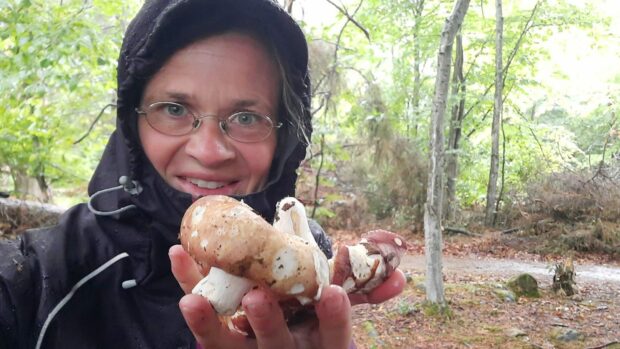
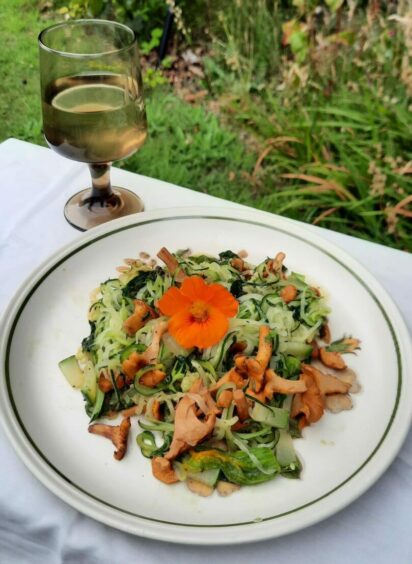
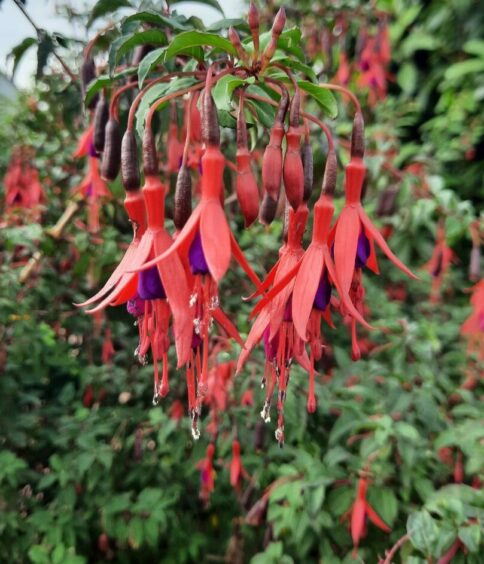
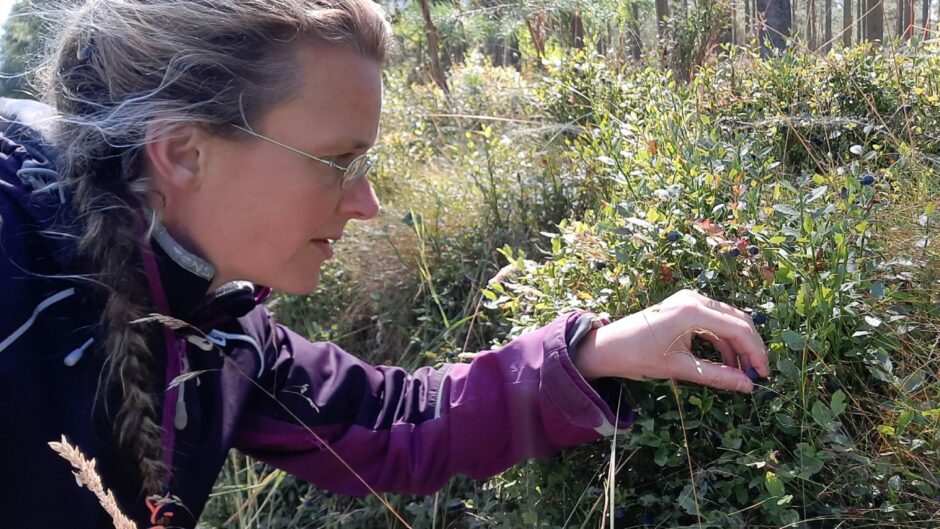
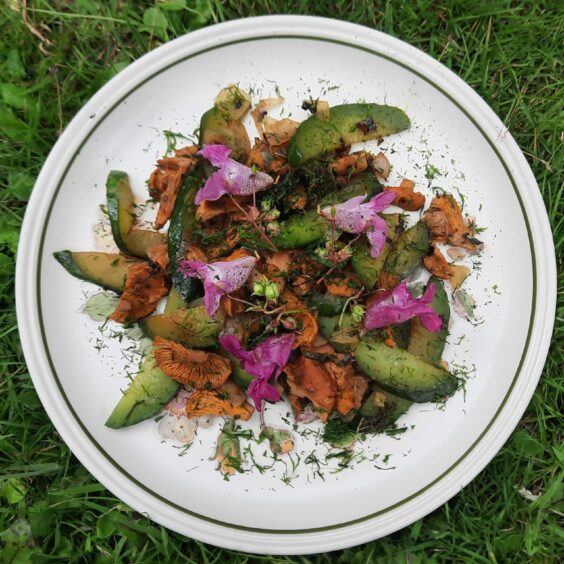
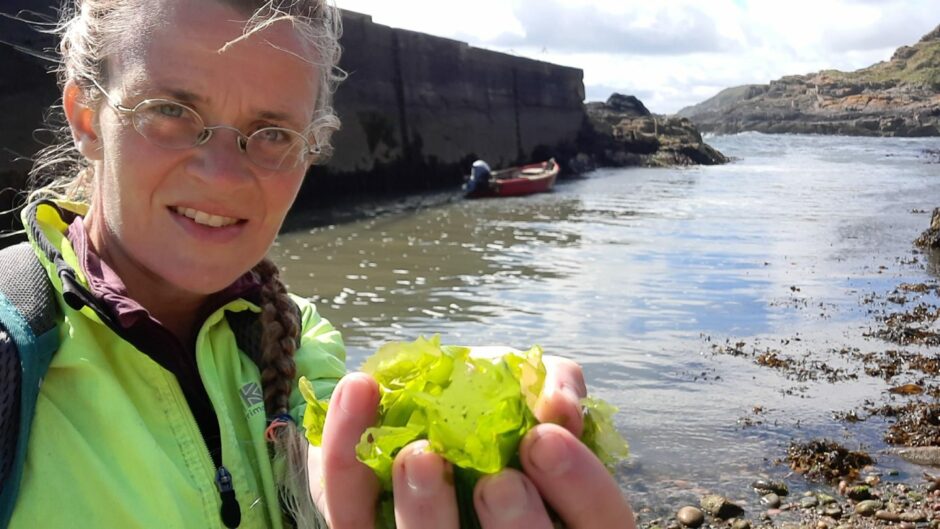
Conversation